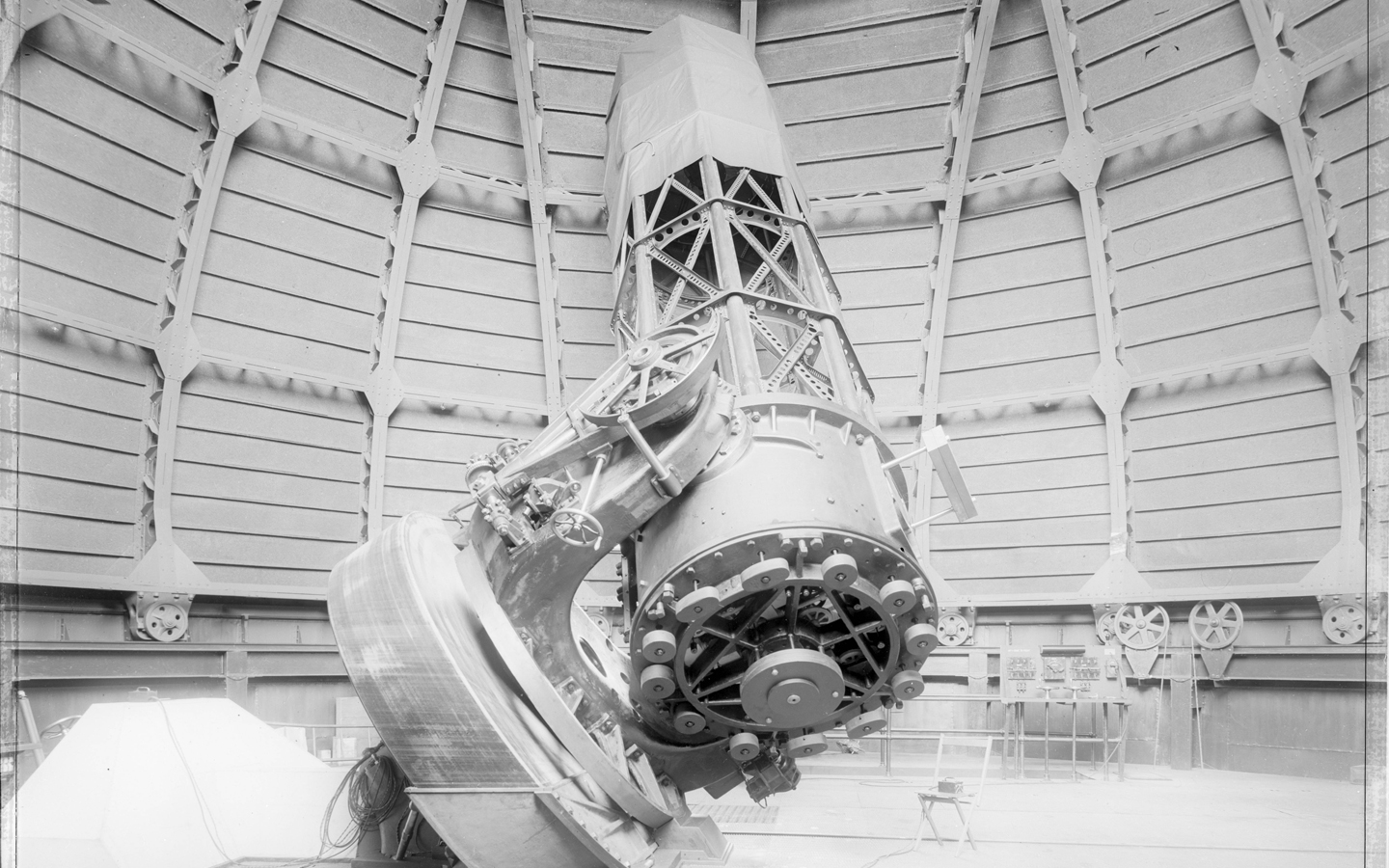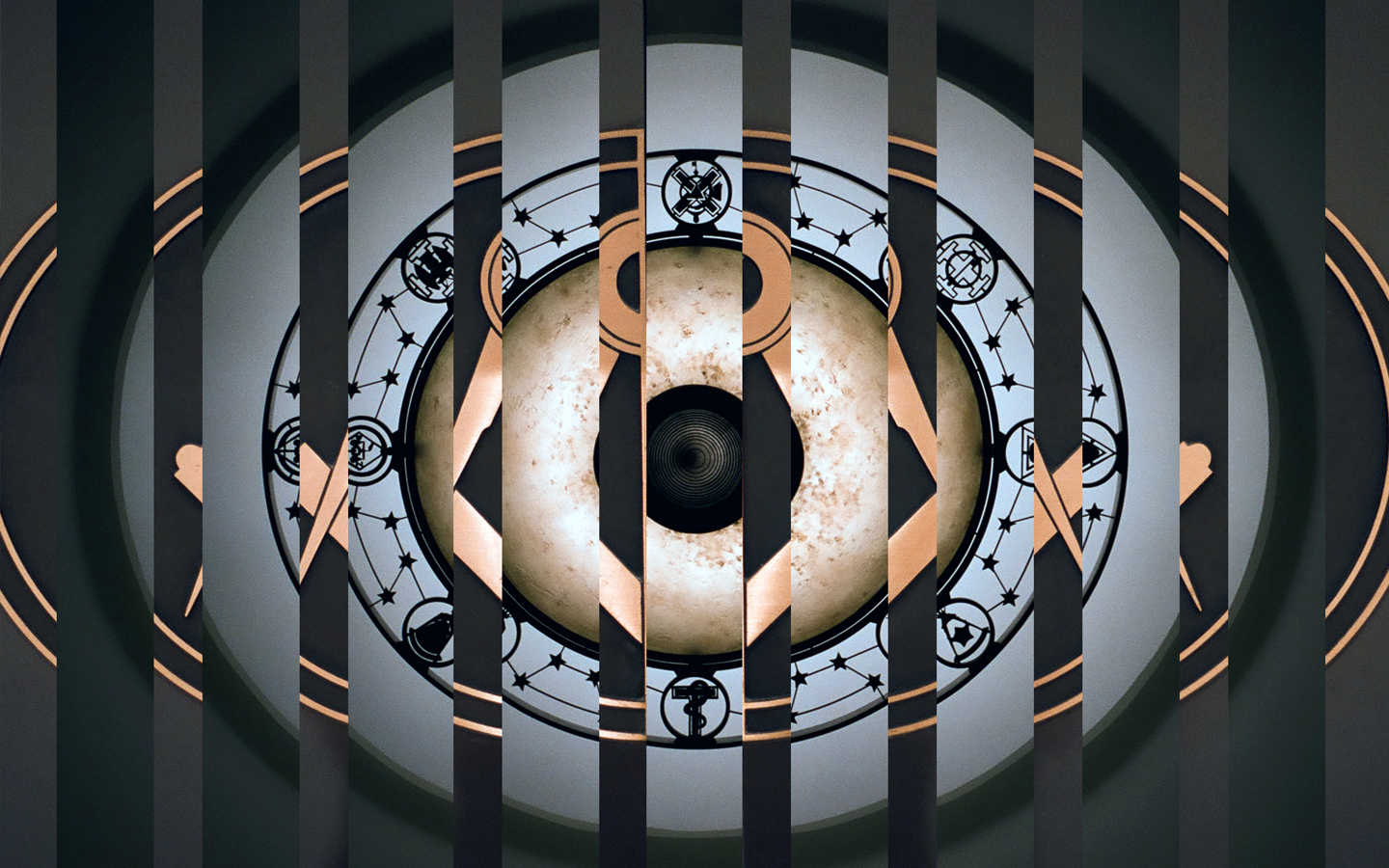
Mount Wilson Observatory
TEXT ANYA JOHNSON
VISUAL JON PHAM
Only a fool stares into the Sun. You’ve done it, I’ve done it. There’s the whiteout, the retina burn, followed by the reverb of ultraviolet spectres and the quickening horror that you’ve done something irreversible. So what kind of fool dedicates a life to examining our brightest star?
George Ellery Hale began looking past the confines of our planet as a child. His pursuit of stellar knowledge was nurtured by wealthy parents and refined during his tenure at the Massachusetts Institute of Technology, Harvard College Observatory, and the University of Chicago. By 1897 (aged 29) he was the Director of Yerkes Observatory in Wisconsin, with the most advanced telescope in the world at his disposal. Yet, as Tim Thompson recounts in A Temple of Science: The 100-Inch Telescope at Mount Wilson Observatory, “Hale already knew this instrument—then the largest in the world—would be both too small, and the wrong kind, to solve the problem of stellar physics.” So what exactly was the problem with stellar physics? Thompson, a physicist by training and the most senior docent at Mount Wilson Observatory, was kind enough to offer an informal explanation. For Hale, the work at hand was “understanding the nature and evolution of stars.”
In his quest to develop better star-studying instrumentation, Hale simultaneously solved a more terrestrial problem. Describing early astrophysicists as a “scattered and leaderless bunch,” Thompson says, “What George Hale did that was really spectacularly important—and that’s rarely talked about—is [create] the first institution in the world dedicated to doing astrophysics instead of classical astronomy… and in the act of doing that he created a community of people.” Thompson refers here to Hale’s founding of Mount Wilson Observatory in 1904, as well as to the distinction between astrophysics and astronomy. He adds, “Astronomers classically were timekeepers and experts in navigation—they were orbit calculators. Real astronomers didn’t do physics.” Of course, this makes sense if you parse the etymology of the terms, but as a scientific layman, I had never bothered to do so. Another useful definition is that astrophysics is the application of physics to astronomical observations, in effect, “turning qualitative sciences with a hefty dose of philosophy into a quantifiable science dominated by laboratory physics and mathematics.”
But why Pasadena? Hale’s objective to build a more advanced instrument than the 40-inch aperture refracting telescope at Yerkes Observatory could have been executed far closer to Wisconsin. Moreover, building a solar empire above the San Gabriel Mountains posed a monumental challenge in the early twentieth century. Mount Wilson (then Wilson’s Peak) was, in fact, carefully chosen for the quality of “seeing” available at its summit. Telescopes require minimal air turbulence to achieve accurate imaging, so, in pursuit of perfection, Hale went west.
To facilitate the formidable build, the Mount Wilson roadway had to be significantly widened—mostly by hand and employing Japanese laborers and mule drawn scrapers—to allow trucks’ passage. Between 1904 and 1917, tarpaulin-draped trucks hauled some of the most significant scientific instruments of the modern age piecemeal up a dirt toll road.
While construction was slow and frequently stalled by environmental constraints, the discipline of astrophysics advanced. “Just about every big name in astronomy you can think of in the first half of the twentieth century came here to do something,” notes tour guide Thompson, pointing out framed photos of Albert Einstein and Stephen Hawking, as well as a guest book bearing their marks, housed in the 150-foot solar telescope tower. The list of scientific breakthroughs made at Mount Wilson Observatory are seemingly endless. The most widely lauded include the discovery of magnetic fields in sunspots, Harlow Shapley’s quantification of the Milky Way Galaxy, and Edwin Hubble’s identification of spiral galaxies and the expanding nature of our universe. It is no overstatement when Thompson writes, “Here at Mount Wilson we discovered the Sun, the stars, the Galaxy, and the whole wide universe beyond, in a very real sense.”
Lesser-known are the men behind the maverick engineering of the Observatory. Everywhere you look, precision rules. The white steel domes that crown Mount Wilson, resembling a Space Age holy land, are in themselves a triumph of design. Commissioned by D.H. Burnham & Company in Chicago, the 100-inch telescope building was “a drum-like-sub-structure capped by a massive, rotating half spherical steel dome,” visually echoing ancient observatories and religious temples. The dome’s frame was fabricated and assembled by the Morava Company, also in Chicago, before being deconstructed and shipped by freight to the Port of Los Angeles. Only then could they begin the slow ascent up the mountain—a crawling, several-hour trek. Inside the dome, the elegant frame arches overhead, its concentric ribs flawlessly bound by steel trusses and rivets. Inside this immensely powerful structure, one can’t help but feel reverential. What happened next heightens this effect. In what is one of the most disorienting spatial riddles I have experienced, Thompson pressed a button during our tour, essentially “turning on” the building. With a deep groan, the interior pier (the base of the 100-inch telescope) began to spin. Or so I thought. Thompson maintained otherwise, insisting that the telescope remained stationary. It wasn’t until a hatch was opened in the dome and I saw the treetops whizzing by that I believed the 100-ton husk of the entire building was indeed moving, carrying us with it. In Temple, architect Stefanos Polyzoides describes this as an emotional experience: “It both parallels the basic geometric structure of our tiny planet and highlights a miraculous sense of mobility contrary to human expectations… [it is] an unwitting illustration of the principle of relativity.”
Hale, who supervised the execution of the Observatory, was in the business of defying human expectations. Until 1908, the largest and most productive telescopes were refractors, which bend light onto a focal plane. Instead, Hale chose mirror-based reflectors for the 60-inch and 100-inch telescopes. Invented by Sir Isaac Newton in 1668, a good reflecting telescope has a larger aperture, works with a wider spectrum of light, and reduces chromatic aberrations caused by refracting lenses. The design for the 100-inch telescope’s mirror, ultimately weighing 9,000 pounds, was no exception to construction challenges. The glass disc, bankrolled by Los Angeles businessman John Hooker, was produced by the French company Saint-Gobain Glass. In fact, Saint-Gobain produced eight iterations of the mirror, all flawed. Seven years after the initial order of the mirror blank, Hale decided to proceed, despite bubbles in the glass. The disc was then handed off to George Ritchey, who spent another seven years grinding and polishing the glass into its final, effectually perfect form.
The marriage of beauty and function, evident to anyone who visits Mount Wilson Observatory, is what makes the site unforgettable. “The whole building is really conceived as an instrument,” Polyzoides observes, and yet the mechanics are tempered by its virtuosic, ageless design. It is easy to imagine this site as a temple not only of science, but of metaphysical thought. After all, what is science if not an inquiry into being? The façade of Hale’s personal laboratory, now a private residence, is etched with bas-relief panels depicting the Egyptian pantheon. The Sun god, Ra, hovers above the entryway, emblematic of Hale’s life-long occupation. Hale was not insensible to the divine—like his astronomer predecessors, he was concerned with the fundamental nature of reality. Whether that concern was innately spiritual or mathematical is largely immaterial. Upon leaving our interview, Polyzoides asked me, point-blank, what could possibly be written about Hale and his achievements that hadn’t already been said. The answer is, nothing. I can, however, urge you to seek your own understanding of reality and draw inspiration from those who have advanced our capacity as seekers. Perhaps consider that it’s all connected, or, as Joseph Murray puts it, “Matter is spirit reduced to the point of visibility.” Perhaps go a step further and consider how to further this hypothesis, how to examine spirit that is, as yet, invisible.




